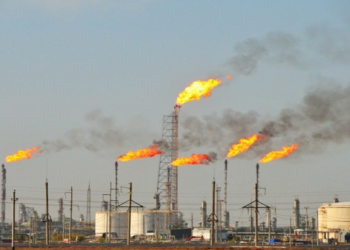Fatih Birol, the Executive Director of the International Energy Agency (IEA) has said that oil markets are on edge. He stated this during a recent interview with S&P Global Commodity Insights.
According to Birol, the oil market could become highly insecure courtesy of the ongoing Israel-Hamas war which is causing insecurity around crude oil supplies.
Note that as of Tuesday evening, Defense Minister Yoav Gallant announced that the Israeli Defense Forces have entered the core of Gaza City.
He emphasized the IDF’s strategic infiltration, originating from both the northern and southern fronts, meticulously coordinated across land, air, and naval forces.
Meanwhile, during the interview with S&P, Birol noted that claims that oil and gas markets will not be affected by the war are getting weak.
- “Oil markets are on edge. The issue is whether one or more than one producing country is directly involved in the crisis or not. If that is the case, we may well see that the markets could be negatively affected in terms of supply disruptions and high oil prices.
- “I think if I was not an energy person but a man on the street, I would think that the claims that oil and gas are safe and secure choices for energy are getting weaker and weaker. This is something that the oil and gas industry needs to think about.
- “They are losing a lot from the narrative that they are a reliable, secure, and safe energy choice. When I look at the natural gas markets, what happened two years ago, with the Russia-Ukraine situation and gas prices suddenly increased substantially, they became volatile, and the availability of gas became a key question.”
Note that Brent Nov. 6 at $88.095/b, down from a peak of $95/b in the wake of Hamas’ Oct. 7 attack on Israel, but up by around $13/b since the beginning of 2023.
What the World Bank is saying
In its October 2023 Commodity Outlook, the World Bank noted that geopolitical risks have sharply increased in the wake of the conflict in the Middle East and constitute the most important upside driver of oil prices.
If it becomes a wider regional conflict, the impact on oil markets could be significant.
The report also provided various scenarios that could lead to different outcomes:
In a small disruption scenario, a minor reduction in global oil supply of 0.5 to 2 million barrels per day (mb/d) could occur, amounting to around 0.5% to 2% of the 2023 supply.
This reduction is like past cuts by oil producers in the region and might lead to an initial oil price surge of 3% to 13% above the forecasted price of $90 per barrel in 2023’s fourth quarter.
These price shifts are comparable to those observed after the Libyan civil war in 2011 and adjustments made by OPEC+.
In a medium disruption scenario, a more moderate decrease in global oil supply by 3 to 5 mb/d, around 3% to 5% of the 2023 supply, could prompt oil prices to rise by 21% to 35% above the 2023/Q4 baseline.
Under a large disruption scenario, a substantial decline in global oil supply by 6 to 8 mb/d, approximately 6% to 8% of the 2023 supply, would result in a significant oil price increase of 56% to 75% above the 2023/Q4 baseline.
Impact on the local market
Nigeria, as a substantial oil producer (1.5 million barrels per day in September 2023), might face revenue shifts due to potential escalations in the Israel-Hamas war.
If the conflict expands to include other Middle Eastern countries or disrupts vital shipping routes, there could be a noteworthy effect on global oil prices.
While higher oil prices could bolster Nigeria’s oil revenue, they could also hike expenses for countries reliant on refined petroleum imports, like Nigeria itself.
Right now, petroleum product prices in Nigeria are rising even as Nigerians battle with rising prices across the board and a 26.72% inflation rate.






















